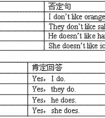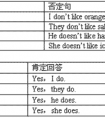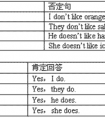句型转换.1. She said,"I will have a birthday party for Li Hua."(改为间接引语)She said _________a_________ _________ _________a birthday party for Li Hua.2.-八年级英语
How作状语,修饰修饰形容词、副词、或句子;
what作定语,修饰名词(名词前可有形容词或冠词)。
一、由感叹词what引导的感叹句。
1.① What+a/an+(形容词)+单数可数名词+主语+谓语!
② What+名词词组+主语+谓语!
如: What a fine day it is!
2. What+(形容词)+可数名词复数或不可数名词+主语+谓语!
如: What kind women they are!
What nice music it is!
二、由How引导的感叹句。(how用来修饰形容词、副词或动词。)
1.How+形容词(副词)+主语+谓语!
如: How hard the workers are working!
How clever the girl is!
How quickly the boy is writing!
2. How+主语+谓语!
如:How time flies! 时光飞逝!
三、注意:
1. 当how修饰动词时,动词不跟着感叹词提到主语之前。
如: How fast the runner runs!
2. how与what引导的感叹句中的第一种格式(单数名词)一般情况下可以相互转换,转换后意义不变。
如: What an interesting story it is! = How interesting the story is!
What a beautiful building it is! = How beautiful the building is!
3. 在口语中,感叹句的主语和谓语常常省略。
如: What a nice present!(省略it is)
How disappointed!(省略she is或其它可作本句主、谓的词语)
1.由"what"引导的感叹句:"what"意为"多么"用作定语,修饰名词(被强调部分),单数可数名词前要加不定冠词a/an,复数可数名词或不可数名词前不用冠词。
这类句子的结构形式是:
what+(a/an)+adj.+n.+主语+谓语+(it is).
如: What a clever girl she is! 多么聪明的姑娘呀!
2.由"how"引导的感叹句:"how"意为"多么",用作状语,修饰形容词或副词(被强调部分)。
如果修饰形容词,则句中的谓语动词用系动词;
如果how修饰副词,则句中的谓语动词用行为动词,这类句子的结构形式是:
How+adj.(adv.)+主语+谓语+(it is).
如: How cold it is today!今天多么冷呀!
3.在表示同一意义时,英语感叹既可用"what"引导,也可用"how"引导。如:
What a hot day it is!
How hot the day is !
4.感叹句在表示激动强烈的感情时,口语中常常采用省略句,其后面的主语和谓语往往略去不讲。
如:What a fine day! 多么晴朗的天呀!
一般陈述句转换成How或者What引导的感叹句的方法:
方法:
找出陈述句中的主语和谓语部分,再找出形容词,最后找陈述句中是否包含该形容词修饰的名词部分。
例如:My classmates are very kind and helpful.
分析:
句子的主语是my classmates,谓语(即动词)是are,形容词有kind和helpful,但没有该形容词要修饰的名词。
因此可以转换成How引导的感叹句,根据“How + adj. + 主语 + 谓语!”,
该陈述句可以改成:
How kind and helpful my classmates are!
例如:China is a peaceful country.
分析:
句子中的主语是China,谓语是is,形容词是peaceful,而且有该形容词修饰的名词country,并且,country是可数名词,需要用冠词,原句有冠词a,
因此可以转换成What引导的感叹句,根据“What + n. + 主语 + 谓语!”,
该句子可以改成:
What a peaceful country China is!
感叹句用法:
感叹句多以how或what引导,但在口语中,还有一些特殊的感叹句表达形式。
1.以副词here, there, in开头的感叹句。
Here comes the bus! 公共汽车来了!
There they are! 他们在那儿呢!
2.以疑问词who开头,表示惊奇。
Who else will read such a book! 谁还会读这样的书!
3.以情态动词may开头,表示愿望。
May you both be happy! 祝二位幸福。
May you succeed! 祝你成功!
4.否定疑问句用作感叹句时,它的意义是肯定的;但肯定疑问句用作感叹句在美国英语中比较常见。
Aren’t they sweet! 他们多可爱啊!
I am hungry! 我饿极了!
5.一些短语用作感叹句。
Dear me! 哎呀! My goodness! 嗳呀!
None of your nonsense! 不要胡说了!
6.一些作表语的成分用作感叹句。
Just my luck! 又倒霉了!
Sorry, my mistake! 对不起,是我的错!
7.以从句表示的感叹句。例如:
As if were my fault!好像是我的错似的!
To think a scandal of this sort should be going on under my roof!真想不到这种丑事竟然出在我们家里!
一、由 what 引导的感叹句,其句子结构可分为以下三种:
“ What + a/an +形容词+可数名词单数+主语+谓语!”。如:
What a nice present it is! 它是一件多么好的礼物啊!
What an interesting book it is! 它是一本多么有趣的书啊!
“ What +形容词+可数名词复数+主语+谓语!”。如:
What beautiful flowers they are! 多么漂亮的花啊!
What good children they are! 他们是多么好的孩子啊!
“ What +形容词+不可数名词+主语+谓语!”。如:
What fine weather it is today! 今天天气多好啊!
What important news it is! 多重要的新闻啊!
二、由 how 引导的感叹句,其句子结构也分为三种:
“ How +形容词 / 副词+主语+谓语!”。如:
How careful she is! 她多么细心啊!
How fast he runs! 他跑得多快啊!
“ How +形容词+ a/an +可数名词单数+主语+谓语!”。如:
How beautiful a girl she is! 她是个多么漂亮的姑娘啊!
“ How +主语+谓语!”。如:
How time flies! 光阴似箭!
由 what 引导的感叹句与由 how 引导的感叹句有时可以转换,但句中部分单词的顺序要有所变化。如:
How beautiful a girl she is! = What a beautiful girl she is!
What delicious cakes these are! = How delicious these cakes are!
三、有时感叹句也可以由一个单词、词组、祈使句、陈述句等构成。
如: Good idea! (好主意!)
wonderful! (太精彩了!)
Thank goodness! (谢天谢地!)
考点名称:直接引语,间接引语
- 直接引语和间接引语:
引用别人的话有两种方式,一种是讲述别人的原话,并把它放在引号里,这叫直接引语;
另一种是用自己的话来转述别人,并且不能用引号,这就是间接引语。直接引语和间接引语之间可以互相转换。 直接引语和间接引语关系:
直接引语:直接引述别人的话(句子中有“”)。
间接引语:用自己的话转述别人的话,叫“间接引语”(句子中一般无“”)
间接引语在大多数情况下是一个宾语从语。直接引语变成间接引语时,要注意以下几点:
人称变化、时态变化、宾语从句要用陈述句语序。
1.直接引语是陈述句,变成间接引语时,由连词that 引导。例如:
She said, "I am very happy to help you."→She said that she was very happy to help you.
2. 直接引语是一般(选择/反意)疑问句,变成间接引语时,由连词whether或if 引导。例如:
He asked me, "Do you like playing football?"→He asked me if/whether I liked playing football.
注意:大多数情况下,if和whether 可以互换,但后有or not,或在动词不定式前,或放在介词后作连接词时,一般只用whether。例如:
She asked me whether he could do it or not.
He hesitated about whether to drive or take the train.
3. 直接引语是特殊疑问句,变成间接引语时,由相应的疑问词who, whom, whose, how, when, why, where 等引导。例如:
My sister asked me, "How do you like the film?"→My sister asked me how I liked the film.
4. 直接引语是祈使句,变成间接引语时,把动词原形变成动词不定式,并在动词不定前加tell, ask, order 等的宾语。例如:
The captain ordered, "Be quiet."→The captain ordered us to be quiet.
注意:此种情况的否定句,在动词不定式前加not。
My teacher asked me, "Don't laugh."→My teacher asked me not to laugh.
一些注意事项:
(1)如果直接引语是表示客观真理时,变为间接引语,一般现在时不改为一般过去时。如:
The teacher said "The earth goes round the sun."
→The teacher said that the earth goes round the sun.
(2)如果直接引语中有明确表示过时间的状语,变为间接引语时,一般过去时不改为过去完成时。如:
He said to me, "I was born in 1973."
→He told me that he was born in 1973.(3)如果直接引语所述事实在当时和目前同样生效,变为间接宾语时,一般现在时不改为一般过去时。如:
He said, "I'm a boy, not a girl."
→He said that he is a boy ,not a girl.(4)如果直接引语中的谓语动词表示一种反复出现或习惯动作,
在变为间接引时,一般现在时不改为一般过去时。如:
The girl said, "I get up at six every morning."
→The girl said that she gets up at six every morning.(5)如果直接引语中含有since, when, while 引导的表示过去时间的状语从句,
- 最新内容
- 相关内容
- 网友推荐
- 图文推荐
| [家长教育] 孩子为什么会和父母感情疏离? (2019-07-14) |
| [教师分享] 给远方姐姐的一封信 (2018-11-07) |
| [教师分享] 伸缩门 (2018-11-07) |
| [教师分享] 回家乡 (2018-11-07) |
| [教师分享] 是风味也是人间 (2018-11-07) |
| [教师分享] 一句格言的启示 (2018-11-07) |
| [教师分享] 无规矩不成方圆 (2018-11-07) |
| [教师分享] 第十届全国教育名家论坛有感(二) (2018-11-07) |
| [教师分享] 贪玩的小狗 (2018-11-07) |
| [教师分享] 未命名文章 (2018-11-07) |






